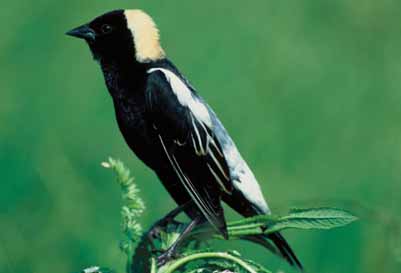Grassland
|
Northern Harrier, American Kestrel,
Barn Owl, Killdeer, Upland Sandpiper, Horned Lark, Savannah Sparrow, Grasshopper Sparrow, Vesper Sparrow, Eastern Meadowlark, Bobolink |
Grassland specialists declined precipitously between the first and second atlases as quality habitat has been lost. A loss of suitable open farmland habitat in recent decades is well-documented and has taken its toll on this group of species.
- Losses in Priority 1 block occupancy in this group ranged from 26 to 85%.
- Exceptions: Northern Harrier increased 91% in Priority 1 blocks; Savannah Sparrow increased from 113 to 130 Priority 1 blocks.
- Grasshopper Sparrow and Upland Sandpiper have almost completely disappeared in Vermont.
- Vesper Sparrow, Eastern Meadowlark and Horned Lark disappearing from regions where they occurred during first Atlas.
- American Kestrel and Bobolink show declines in block occupancy and abundance.
Declines in grassland bird populations seen in Vermont echo trends across their breeding ranges. The consistent declines in grassland birds have been steeper than any other avian habitat group in North America (McCracken 2005). Reasons for declines include:
- Loss and fragmentation of agricultural grasslands on breeding grounds to development
- Conversion of pasture and hay to crops
- Succession of idled lands
- Intensification of agricultural practices (e.g., earlier and more frequent haying, over grazing)
- Factors during migration or winter that affect survival may have ramifications to population stability for some species.







